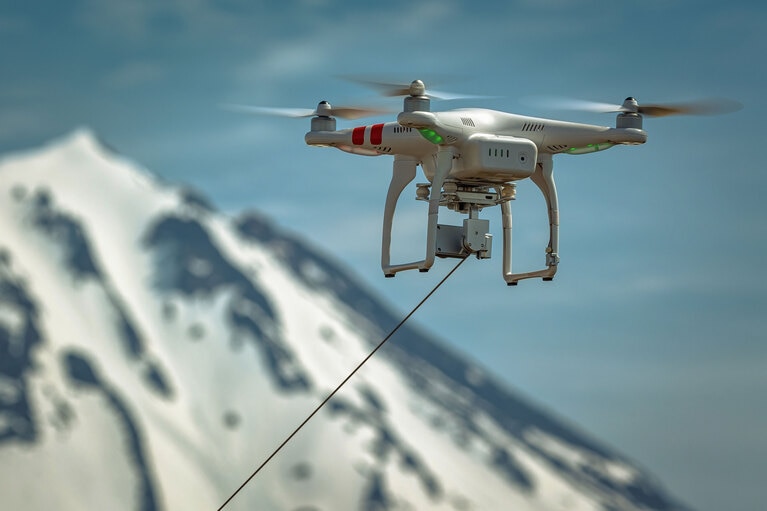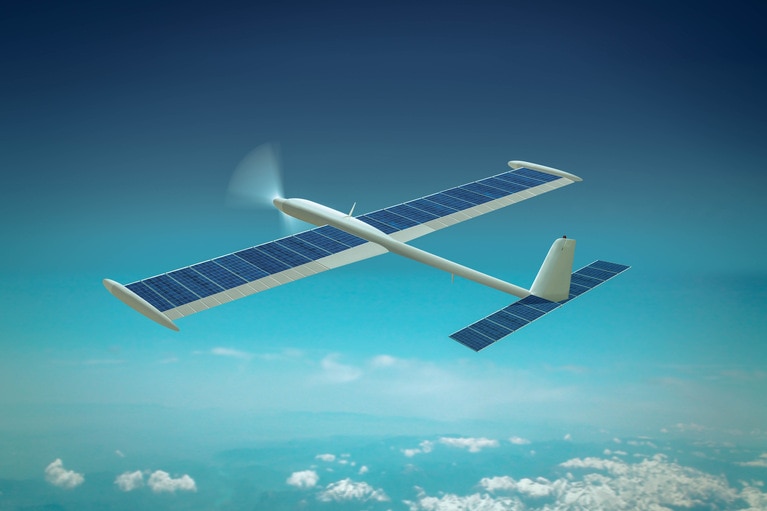
UAV Market Trends and Power System Seminar 2025 Taipei, Taiwan
Power modules enable top performance and innovation for today’s advanced UAVs
Robots are getting smarter and can now recharge themselves wirelessly.
As more companies begin to deploy robots and UAVs to support their business objectives, automating the charging process is essential. Today some companies are deploying fleets in the hundreds or thousands for logistic, delivery or inspection, and they are discovering that manual maintenance and recharging are cost prohibitive.
Wireless charging enables robots to charge without having to leave the work area to periodically plug in or recharge at contact-based charging stations. In fact, the notion of centralized charging stations is obsolete when wireless power is used to electrify an entire facility – allowing fewer robots to do more work.
WiBotic, a leader in robotic/UAV wireless charging, is automating fleets of drones and robots. To achieve this mission they rely on Vicor 48V VI Chip® PRM™ Regulator to overcome complicated the power challenges
The next step is toward enhanced autonomy is flexible and efficient wireless re-charging.
WiBotic enables drone and robot operators to take that next step by developing wireless charging and power optimization solutions that are integral to charging the rapidly growing ecosystem of aerial, mobile, marine and industrial robots. WiBotic wireless charging solutions are designed to facilitate “many-to-many” operation, whereby multiple robots (including from different manufacturers) can charge from the same transmitter at different times. Alternatively, an entire fleet of robots can move between a network of transmitters in different locations within a warehouse. In short, any robot can charge from any station, even if the robots have different battery chemistries, voltages and charging current.
“Wireless power all comes down to impedance matching” said Ben Waters, CEO at WiBotic. “The impedance of the these systems is changing all the time…. and in order maintain high efficiency through the wireless power link you need a DC-DC supply on the front end that is very robust and supports a wide range of load and temperature conditions. That is where we have really benefited from using the Vicor modules.”
The Vicor 48V VI Chip® PRM™ Regulator is a 400W high-efficiency converter that meets demanding WiBotic requirements for a wide range of load conditions to enable charging a wide range of batteries. It operates from a 36 – 75V input to generate a regulated output. The device powers the adaptive matching transmitter onboard the WiBotic TR-110 wireless charging station, which feeds power wirelessly to the robot’s or UV’s onboard receiver. The PRM accepts 48V from an AC-DC power supply and the output voltage is adaptively controlled and trimmed from approximately 20 – 55V.
“Vicor has been a great partner to Wibotic. They’ve made it very easy for us to have reliable power for our wireless power system,” said Waters.
The Vicor PRM enables consistent, high-efficiency conversion across the full range of impedances, flexibly supporting ‘full charge’ and ‘trickle charge’ modes with no significant drop-off in efficiency at lower power levels – a critical performance benchmark that competing power components failed to achieve.
Ben Waters has been the CEO of WiBotic since 2015, when he and Co-Founder Joshua Smith commercialized the wireless charging solutions they developed at the University of Washington.
Ben Waters, Wibotic CEO and Founder
This podcast was originally published by Power System Design.
UAV Market Trends and Power System Seminar 2025 Taipei, Taiwan
Power modules enable top performance and innovation for today’s advanced UAVs
High-density, high-power modules enable lighter, safer, lower cost tether cables to extend missions
This class of unmanned vehicle is powered and controlled via a tether from a ground-based power source assisting in extended missions
High-efficiency, high-density modules free up space for advanced communications and extend range
High-efficiency class of UAV depend on solar power to meet its long flight time requirements
DCM DC-DC converters double the internal bus power and help keep the aircraft as light as possible
High-altitude long-endurance (HALE) UAVs are essentially flying satellites, designed to operate at extremely high altitudes for extended periods




